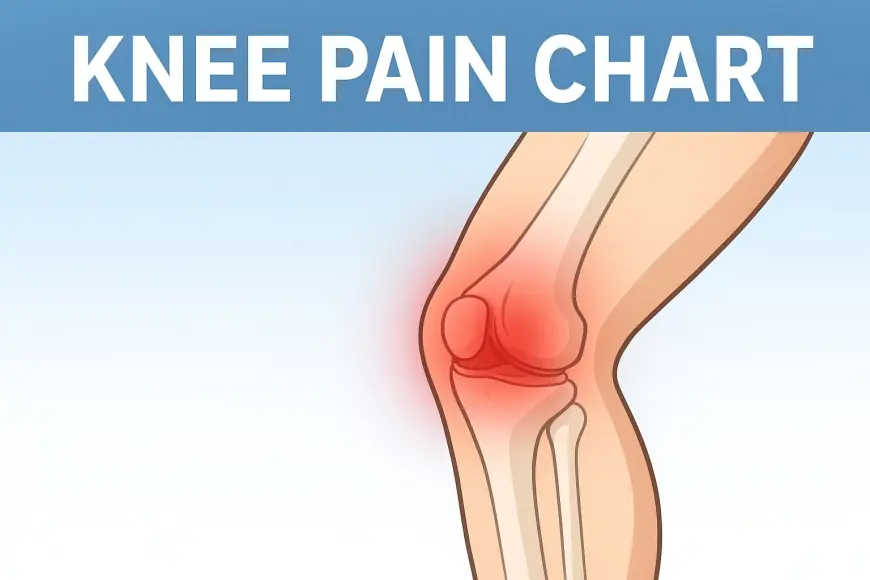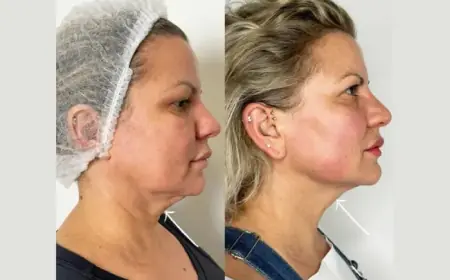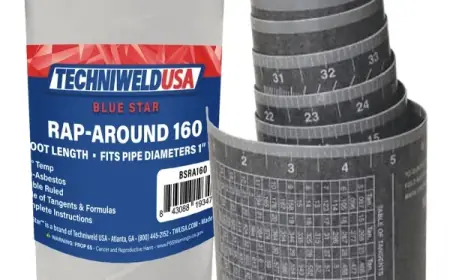Why is the Knee Pain Chart Important?
Knee pain charts are always a good way to find the exact cause of knee pain. But it is always recommended that either you have knowledge about knee pain locations and causes, but never be late to consult a knee doctor in Fort Worth.

Any-body can suffer from knee pain due to its capability of bearing overload and recurring movements. So, there are many factors which can lead to knee pain but it is always essential to find the exact location and cause of knee pain. For this purpose, the knee pain chart is always remarkable.
Outer Knee Pain (Lateral Knee Pain Or Outer Knee Pain)
According to knee pain chart, the following injuries can cause pain in the outer knee:
Iliotibial Band Syndrome (ITBS)
Most runners and cyclists experience lateral knee pain as a result of ITBS. Due to inflammation caused by the iliotibial band muscle rubbing against the bone, ITBS is caused by the iliotibial band muscle. Depending on the severity of the injury, knee or thigh pain may range from mild to severe.
Lateral Meniscus Tears
An athlete is likely to sustain a knee injury as a result of a torn lateral meniscus. If the tissue between the bones in the knee joint is injured, a person may suffer from these injuries. A person suffering from a meniscus tear will experience increasing pain, stiffness, swelling, and difficulty moving their knee.
Lateral Collateral ligament (LCL) Injuries
Knee bones are held together by the LCLs, which are located outside of the knee.The outside of the knee will be affected by a LCL sprain. In addition, the area of injury may be swollen.
Pain at the Front Above the Knee
On the front of the thigh, it is located where the quadriceps tendon connects with the kneecap.
Patellofemoral Arthritis
As anatomically this affects the trochlear groove of the femur and the undersurface of the knee cap (patella). A painful condition results when the cartilage covering the bones wears away and becomes inflamed, bringing them into contact with each other.
Plica Syndrome
During knee movement, the thin synovial membrane that lines the joint folds into a plica. An estimated 50% of the population possesses embryonic plicae. An inflamed splint may cause pain and weakness in the knee as a result of repetitive knee movements, trauma, or twisting.
Synovitis
Knees are synovial hinge joints, which are lined with synovial membranes. Inflammation of this membrane is known as synovitis. The condition results in repeated bleeding in joints due to overuse or trauma.
Medial Knee Pain
Medial knee pain is often caused by similar factors to lateral knee pain.
PLICA
Plicas are folds in the synovial membrane lining the knee joint. Each knee contains four of these structures at the embryonic stage, which allow the joint to bend easily. The plicae of approximately half of the population are lost by absorption in the foetal stage. The knee joint can become locked if a splint becomes inflamed as a result of an injury or overuse.
Medial Meniscus Tear or loose Cartilage
There may be pain, swelling, and difficulty moving the knee as a result of a torn or detached meniscus (see lateral meniscus tear).
Osteoarthritis
Pain, reduced mobility, and instability may occur as the cartilage in the medial femorotibial compartment wears down and degenerates.
Osteochondral Defect
Osteochondral defects occur when part of the articular cartilage is damaged or lost, affecting the bone beneath. Pain is felt when weight is placed on the joint, swelling is present, and instability is present.
Avascular Necrosis
When there is a shortage of blood supply to bone tissue, avascular necrosis occurs. Consequently, the bone collapses. One of the causes is excessive alcohol consumption or the use of steroids for an extended period of time. The pain may be gradual at first, occurring only when weight is placed on the knee, but eventually becoming constant.
Diagnostic Tests For Knee Pain
Knee pain is diagnosed through a physical examination that involves observing, feeling, and listening to objective anatomical findings. In addition, the following tests may be performed at pain and spine center in Dallas:
McMurray Test: This test is used to determine whether there are any tears in the meniscus.
Apley Grind Test: A method of detecting meniscal tears.
Lachman Test: Used for the diagnosis of ACL injuries.
Imaging Tests: X-rays, CT scans, and magnetic resonance imaging (MRI) are used to visualize the internal structures of the knee.
Knee Arthroscopy: The procedure of diagnosing and treating problems relating to the knee through surgery.
Joint Aspiration: This procedure is intended to remove fluid from the joint space.
Tips To Care For Your Knees
Here are a few steps you can take to protect your knees:
-
The importance of maintaining a healthy weight cannot be overstated. Approximately four pounds of pressure can be relieved from the knee joint by losing one pound of weight.
-
Keeping your joints lubricated is possible through an active lifestyle. The lower extremity muscles can also be developed by exercising regularly, such as walking and swimming. Joints are better supported by stronger muscles.
-
The recommended daily fluid intake is 2-3 liters.. By staying hydrated, knee cartilage can be prevented from deteriorating.
-
Exercises that cause high impact to the knee, such as downhill running or jumping, should be avoided. If you wish to avoid ligament ruptures, you should remain balanced on both feet and avoid being kicked or stopping suddenly while moving. Knee pain should be treated with rest and avoid overworking the joint.
Summary
Knee pain charts are always a good way to find the exact cause of knee pain. But it is always recommended that either you have knowledge about knee pain locations and causes, but never be late to consult a knee doctor in Fort Worth.
What's Your Reaction?
 Like
0
Like
0
 Dislike
0
Dislike
0
 Love
0
Love
0
 Funny
0
Funny
0
 Angry
0
Angry
0
 Sad
0
Sad
0
 Wow
0
Wow
0


















































